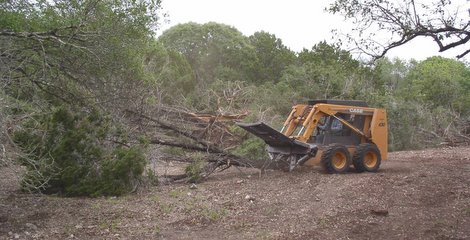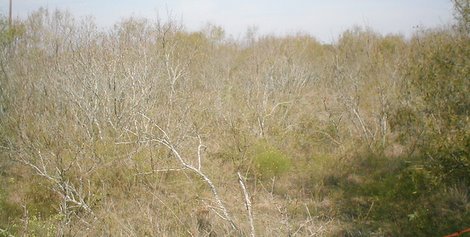Although browse plants are the staple of the white-tailed deer, too much brush can hamper your overall deer management program, particularly when it’s invasive cedar (ashe juniper) or nuisance regrowth such as mesquite. These woody plants are not targeted by deer and often times create problems with overly-dense canopy cover, preventing more beneficial forbs and browse from establishing. And too much brush decreases water infiltration.
However, with brush control comes brush control options: biological, chemical, and mechanical. The use of mechanical equipment to control woody plants will typically result in the initial growth of forbs and annual grasses and the resprouting of many woody species. As a result, woody species targeted for control may have to be stump-sprayed to prevent regrowth. Find out more about the life history of the plant you intend to control prior to investing valuable time and money.

The abundance and diversity of forbs and annuals found post-control results from soil disturbance. Soil disturbance exposes the natural seed bank found in the soil, increasing the quantity, quality, and distribution of plants beneficial to wildlife. For white-tailed deer and most game birds this is a very good thing! However, if hydraulic shears are used for brush removal the amount of ground disurbance will be minimized, but so will erosion issues. This is a good idea on sloped areas with erodible soils.
However, without periodic follow-up treatments of prescribed fire, additional mechanical manipulations, costly herbicides, and/or without proper livestock grazing management, these “cleared” sites will eventually become dense stands of regrowth brush and trees on again, especially if the plant you are trying to control is a root sprouter/resprouter.

Resprouting is good for when we are talking about high-quality deer browse foods, but for plants such as noxious mesquite or redberry cedar, it is not. In these situations, resprouting plants need to be revisited with a proper herbicide application.
Lastly, mowing areas of herbaceous plants with low-density woody plants is another form of mechanical treatment that could have merit depending upon the objectives. However, mowing should be postponed until after the peak of the nesting and fawning period (end of July) of ground-nesting birds and deer.
